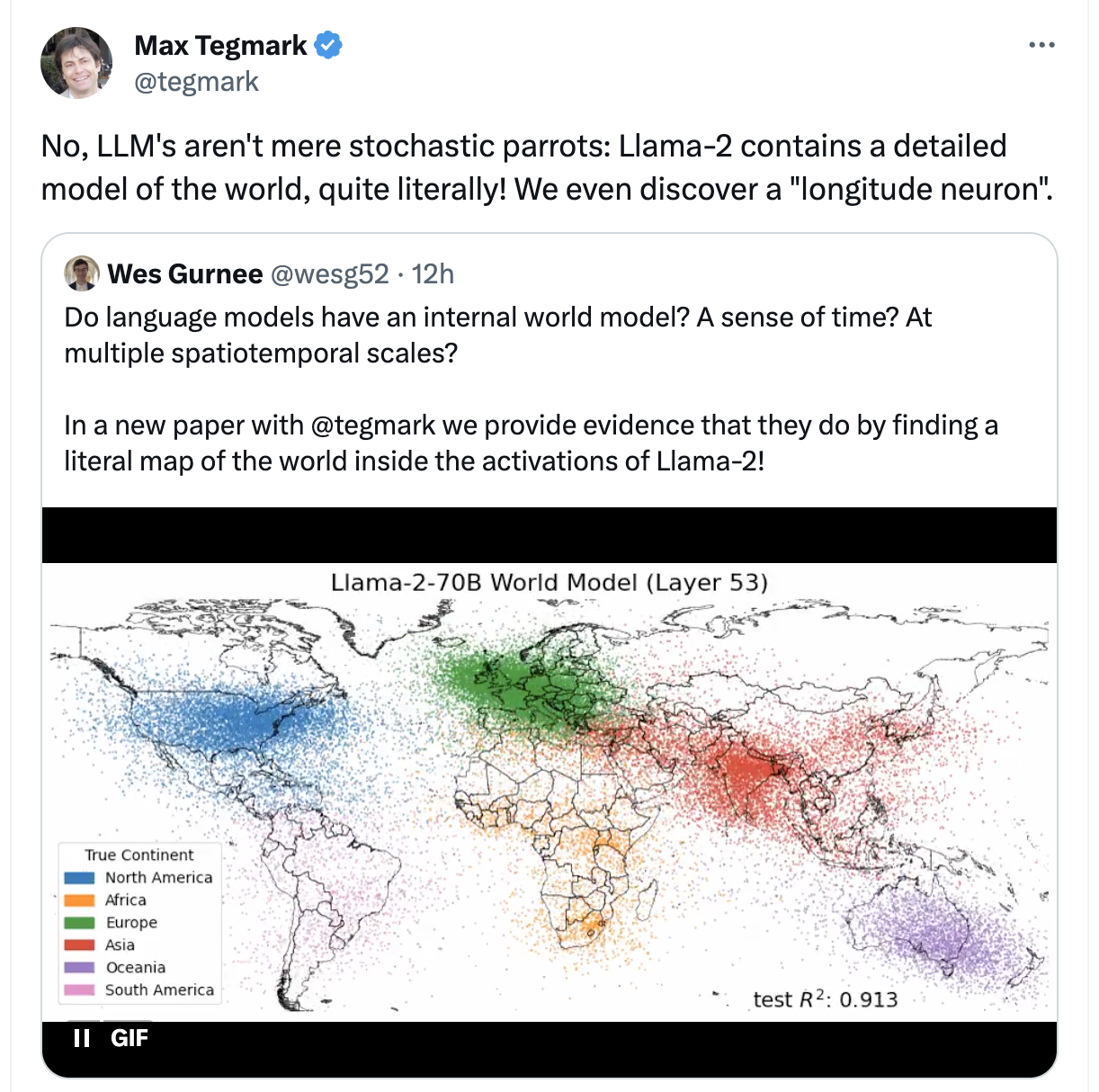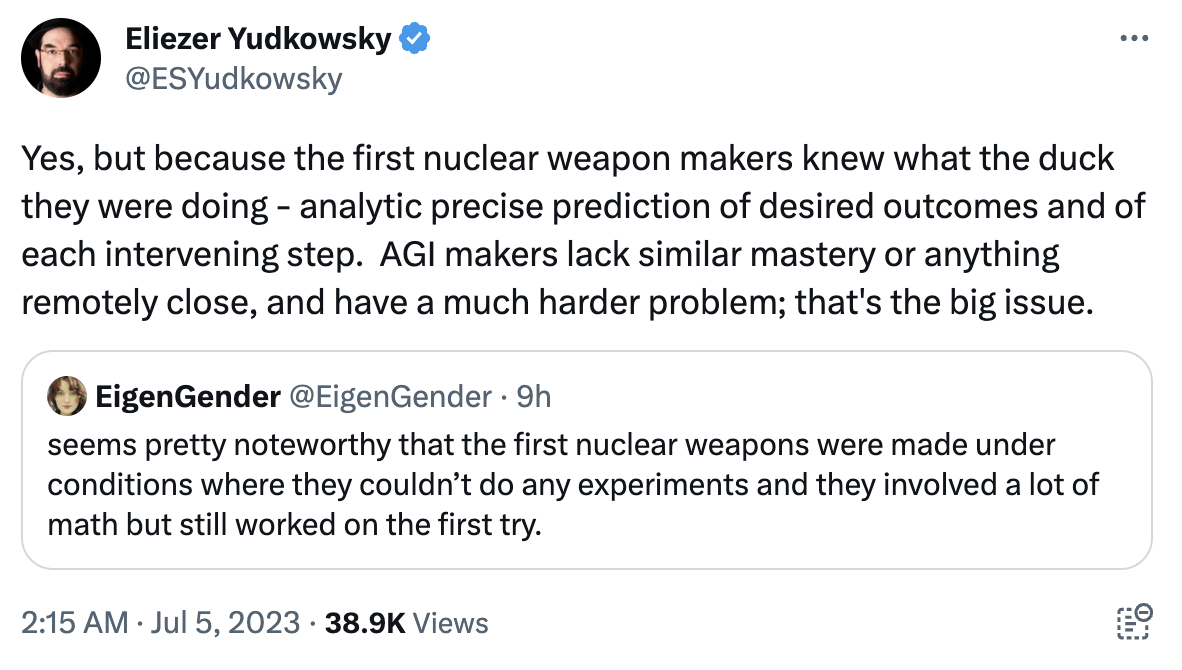24! - Crossed Wires - Leaderboard time 01h01m13s (and a close personal time of 01h09m51s)
Spoilers
I liked this one! It was faster the solve part 2 semi-manually before doing it "programmaticly", which feels fun.
Way too many lines follow (but gives the option to finding swaps "manually"):
#!/usr/bin/env jq -n -crR -f
( # If solving manually input need --arg swaps
# Expected format --arg swaps 'n01-n02,n03-n04'
# Trigger start with --arg swaps '0-0'
if $ARGS.named.swaps then $ARGS.named.swaps |
split(",") | map(split("-") | {(.[0]):.[1]}, {(.[1]):.[0]}) | add
else {} end
) as $swaps |
[ inputs | select(test("->")) / " " | del(.[3]) ] as $gates |
[ # Defining Target Adder Circuit #
def pad: "0\(.)"[-2:];
(
[ "x00", "AND", "y00", "c00" ],
[ "x00", "XOR", "y00", "z00" ],
(
(range(1;45)|pad) as $i |
[ "x\($i)", "AND", "y\($i)", "c\($i)" ],
[ "x\($i)", "XOR", "y\($i)", "a\($i)" ]
)
),
(
["a01", "AND", "c00", "e01"],
["a01", "XOR", "c00", "z01"],
(
(range(2;45) | [. , . -1 | pad]) as [$i,$j] |
["a\($i)", "AND", "s\($j)", "e\($i)"],
["a\($i)", "XOR", "s\($j)", "z\($i)"]
)
),
(
(
(range(1;44)|pad) as $i |
["c\($i)", "OR", "e\($i)", "s\($i)"]
),
["c44", "OR", "e44", "z45"]
)
] as $target_circuit |
( # Re-order xi XOR yi wires so that xi comes first #
$gates | map(if .[0][0:1] == "y" then [.[2],.[1],.[0],.[3]] end)
) as $gates |
# Find swaps, mode=0 is automatic, mode>0 is manual #
def find_swaps($gates; $swaps; $mode): $gates as $old |
# Swap output wires #
( $gates | map(.[3] |= ($swaps[.] // .)) ) as $gates |
# First level: 'x0i AND y0i -> c0i' and 'x0i XOR y0i -> a0i' #
# Get candidate wire dict F, with reverse dict R #
( [ $gates[]
| select(.[0][0:1] == "x" )
| select(.[0:2] != ["x00", "XOR"] )
| if .[1] == "AND" then { "\(.[3])": "c\(.[0][1:])" }
elif .[1] == "XOR" then { "\(.[3])": "a\(.[0][1:])" }
else "Unexpected firt level op" | halt_error end
] | add
) as $F | ($F | with_entries({key:.value,value:.key})) as $R |
# Replace input and output wires with candidates #
( [ $gates[] | map($F[.] // .)
| if .[2] | test("c\\d") then [ .[2],.[1],.[0],.[3] ] end
| if .[2] | test("a\\d") then [ .[2],.[1],.[0],.[3] ] end
] # Makes sure that when possible a0i comes 1st, then c0i #
) as $gates |
# Second level: use info rich 'c0i OR e0i -> s0i' gates #
# Get candidate wire dict S, with reverse dict T #
( [ $gates[]
| select((.[0] | test("c\\d")) and .[1] == "OR" )
| {"\(.[2])": "e\(.[0][1:])"}, {"\(.[3])": "s\(.[0][1:])"}
] | add | with_entries(select(.key[0:1] != "z"))
) as $S | ($S | with_entries({key:.value,value:.key})) as $T |
( # Replace input and output wires with candidates #
[ $gates[] | map($S[.] // .) ] | sort_by(.[0][0:1]!="x",.)
) as $gates | # Ensure "canonical" order #
[ # Diff - our input gates only
$gates - $target_circuit
| .[] | [ . , map($R[.] // $T[.] // .) ]
] as $g |
[ # Diff + target circuit only
$target_circuit - $gates
| .[] | [ . , map($R[.] // $T[.] // .) ]
] as $c |
if $mode > 0 then
# Manual mode print current difference #
debug("gates", $g[], "target_circuit", $c[]) |
if $gates == $target_circuit then
$swaps | keys | join(",") # Output successful swaps #
else
"Difference remaining with target circuit!" | halt_error
end
else
# Automatic mode, recursion end #
if $gates == $target_circuit then
$swaps | keys | join(",") # Output successful swaps #
else
[
first(
# First case when only output wire is different
first(
[$g,$c|map(last)]
| combinations
| select(first[0:3] == last[0:3])
| map(last)
| select(all(.[]; test("e\\d")|not))
| select(.[0] != .[1])
| { (.[0]): .[1], (.[1]): .[0] }
),
# "Only" case where candidate a0i and c0i are in an
# incorrect input location.
# Might be more than one for other inputs.
first(
[
$g[] | select(
((.[0][0] | test("a\\d")) and .[0][1] == "OR") or
((.[0][0] | test("c\\d")) and .[0][1] == "XOR")
) | map(first)
]
| if length != 2 then
"More a0i-c0i swaps required" | halt_error
end
| map(last)
| select(.[0] != .[1])
| { (.[0]): .[1], (.[1]): .[0] }
)
)
] as [$pair] |
if $pair | not then
"Unexpected pair match failure!" | halt_error
else
find_swaps($old; $pair+$swaps; 0)
end
end
end
;
find_swaps($gates;$swaps;$swaps|length)




And done! well I had fun.